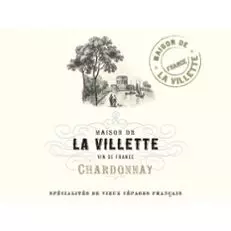Capon Salad: Insalata Di Capone

Capon Salad: Insalata Di Capone is a main course that serves 10. This recipe covers 23% of your daily requirements of vitamins and minerals. One portion of this dish contains approximately 36g of protein, 19g of fat, and a total of 399 calories. From preparation to the plate, this recipe takes around 1 hour and 15 minutes. It is a good option if you're following a gluten free and primal diet. A mixture of olive oil, parmigiano-reggiano shavings, red wine vinegar, and a handful of other ingredients are all it takes to make this recipe so yummy. Users who liked this recipe also liked Capone's Chicken, Broccoli and Ziti, Capone's Chicken, Broccoli and Ziti, and Aeolian Salad – Insalatan Eoliana.
Instructions
1
Put raisins in a bowl and add warm water to cover. Soak until raisins are plumped, about 15 minutes.
Ingredients you will need![Raisins]() Raisins
Raisins![Water]() Water
Water
Equipment you will use![Bowl]() Bowl
Bowl
Ingredients
1Tbsp![aged balsamic vinegar]() aged balsamic vinegar710milliliters
aged balsamic vinegar710milliliters![finely diced celery]() finely diced celery237milliliters
finely diced celery237milliliters![golden raisins]() golden raisins1kgs
golden raisins1kgs![diced poached capon meat]() diced poached capon meat355milliliters
diced poached capon meat355milliliters![fruity olive oil]() fruity olive oil237milliliters
fruity olive oil237milliliters![Parmigiano-Reggiano shavings, optional]() Parmigiano-Reggiano shavings, optional237milliliters
Parmigiano-Reggiano shavings, optional237milliliters![shelled pistachios, blanched and skinned]() shelled pistachios, blanched and skinned473milliliters
shelled pistachios, blanched and skinned473milliliters![pomegranate seeds]() pomegranate seeds6Tbsps
pomegranate seeds6Tbsps![red wine vinegar]() red wine vinegar10servings
red wine vinegar10servings![Salt and freshly ground black pepper]() Salt and freshly ground black pepper
Salt and freshly ground black pepper
 aged balsamic vinegar710milliliters
aged balsamic vinegar710milliliters finely diced celery237milliliters
finely diced celery237milliliters golden raisins1kgs
golden raisins1kgs diced poached capon meat355milliliters
diced poached capon meat355milliliters fruity olive oil237milliliters
fruity olive oil237milliliters Parmigiano-Reggiano shavings, optional237milliliters
Parmigiano-Reggiano shavings, optional237milliliters shelled pistachios, blanched and skinned473milliliters
shelled pistachios, blanched and skinned473milliliters pomegranate seeds6Tbsps
pomegranate seeds6Tbsps red wine vinegar10servings
red wine vinegar10servings Salt and freshly ground black pepper
Salt and freshly ground black pepperRecommended wine: Chardonnay, Sauvignon Blanc, Gruener Veltliner
Salad works really well with Chardonnay, Sauvignon Blanc, and Gruener Veltliner. Sauvignon Blanc and Gruner Veltliner both have herby notes that complement salads with enough acid to match tart vinaigrettes, while a Chardonnay can be a good pick for creamy salad dressings. The Maison de la Villette Chardonnay with a 5 out of 5 star rating seems like a good match. It costs about 14 dollars per bottle.

Maison de la Villette Chardonnay
Lovely golden color with a subtle nose of white flowers and citrus. A refreshing and complex white wine with lemon pie, fresh banana and pear scents followed by roasted hints of praline, vanilla and candied chestnuts. Perfect served on its own as an aperitif or with seafood, grilled fishes and salads.10 to 12 day fermentation with both French and American oak is followed by a soft 6 month maturation on the wine’s natural lies. About half of the final blend completes malolactic fermentation, which allows to keep some natural acidity. An early bottling allows to capture freshness and primary flavors.DifficultyExpert
Ready In1 h, 15 m.
Servings10
Health Score20
Related recipes
Guy-talian Nachos
Arugula, Apple, and Radish Salad with Cider Vinaigrette
Braised Spring Onions, Fennel and Swiss Chard
Pepperoni Dip
Magazine

Your Inner Chef with Taylor Swift's Top 3 Recipes from Her Beloved NYC Hangout

20 Mouthwatering Recipes You Need to Try Today!

Master the Art of Making Perfect Pancakes with This Foolproof Recipe

The Science Behind Red Wine: Its Surprising Health Benefits and Potential Risks

12 Wine Cocktails for a Sophisticated Twist

Sip, Swirl, and Celebrate: Toasting to National Wine Day on May 25th

National Drink Wine Day on February 18

Celebrating Souffle Day with Delectable Delights

Indulge in the Delightful Flavor of Oyster Soup on Its Special Day!

Celebrating World Nutella Day

Indiana's Exciting Addition to the Summer Food Program for School Children

Art of Chimichurri: A Mouthwatering Recipe

Tantalize Your Taste Buds: the Finest Argentinian Restaurants in Los Angeles

Celebrating Argentina Independence Day - July 9, 2024

The Rainbow Theory of Food

Celebrating China's Independence Day with Flavorful Recipes

7 Indian Foods That Have Been Declared the Best in the World

3 Simple Tips to Cut Down on Ultra-Processed Foods, Recommended by a Skilled Nutritionist

Exploring the Fascinating World of Blue Food

Going Green Delicious and Nutritious Green Foods for a Healthier You

Your Inner Chef with Taylor Swift's Top 3 Recipes from Her Beloved NYC Hangout

20 Mouthwatering Recipes You Need to Try Today!

12 Wine Cocktails for a Sophisticated Twist

Sip, Swirl, and Celebrate: Toasting to National Wine Day on May 25th

National Drink Wine Day on February 18

Celebrating Souffle Day with Delectable Delights

Indulge in the Delightful Flavor of Oyster Soup on Its Special Day!

These Super Recipes for Your Football Party!

The Secrets Behind 3 Classic Comfort Food Recipes


